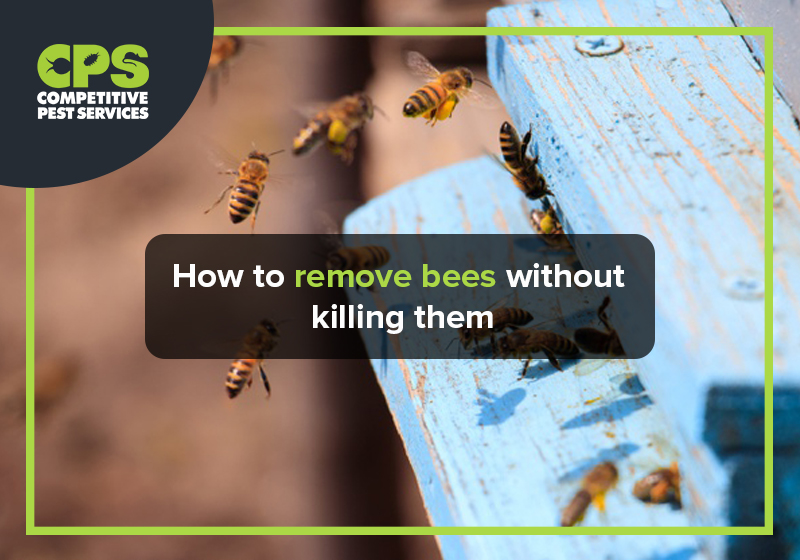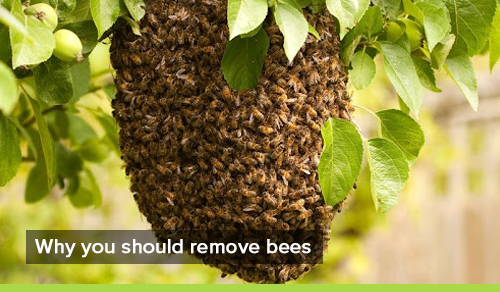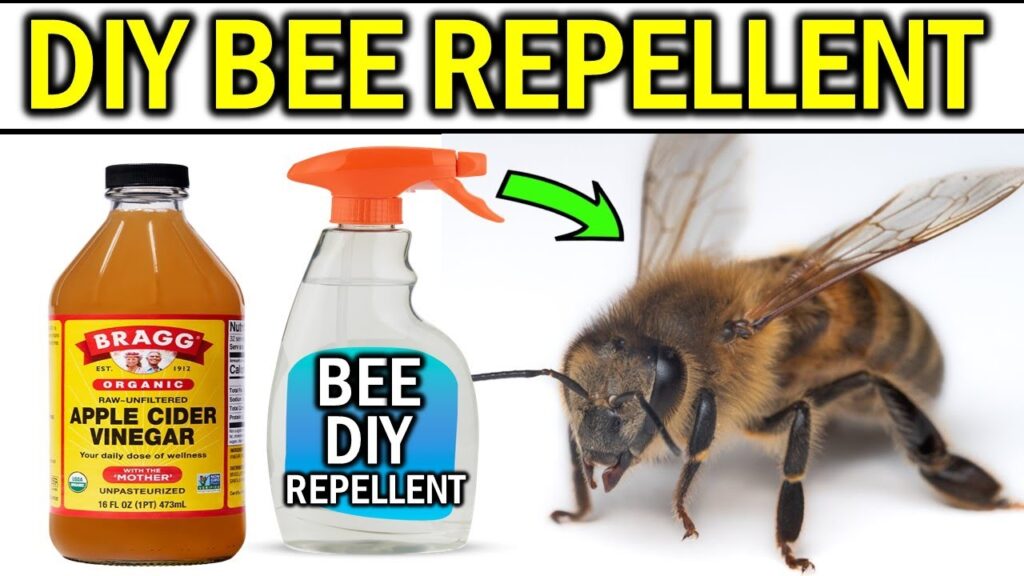
Imagine a world without the buzzing of bees, where flowers cease to bloom and fruits no longer grow. As crucial pollinators, bees play a vital role in our ecosystem, yet sometimes they may become a nuisance. In this article, you will discover effective and humane methods to peacefully coexist with these busy creatures without resorting to harmful measures. So, if you’re wondering how to bid farewell to bees without causing harm, read on to uncover some ingenious solutions that will help maintain harmony between humans and their fuzzy friends.
Why You Should Avoid Killing Bees
Bees play a critical role in the ecosystem and have a profound impact on our lives. They are not just responsible for producing honey; they also contribute significantly to the pollination of plants, ensuring the growth of fruits, vegetables, and flowers. Unfortunately, many people resort to killing bees when they encounter them, without realizing the negative consequences it can have on the environment. It is essential to understand and appreciate the importance of these industrious insects and explore alternative methods to manage bee-related issues without causing harm.
Importance of Bees in the Ecosystem
Bees are incredible pollinators and are responsible for pollinating approximately 80% of flowering plants worldwide. The process of pollination enables plants to reproduce and produce fruits and seeds. Without bees, many crops and plants would struggle to survive, affecting our food supply, ecosystem balance, and biodiversity. Bees also contribute to the production of honey, beeswax, and other bee-related products that bring numerous benefits to human society. By preserving the bee population, we ensure the health and sustainability of our environment.

Negative Effects of Killing Bees
Killing bees can have severe consequences for the environment and agriculture. First and foremost, it disrupts the delicate balance of the ecosystem by impeding the pollination process. This can lead to a decline in the production of fruits, vegetables, and nuts, ultimately affecting food availability and prices. Additionally, the loss of bees can disrupt wildlife habitats and have a cascading effect on other animals that rely on them for food or shelter. The use of pesticides and other harmful substances to kill bees also poses a threat to other beneficial insects, birds, and even humans. It is crucial to explore alternative methods to manage bee-related issues while preserving these essential creatures.
Identifying the Type of Bees
Before taking any action, it is essential to identify the specific type of bees you are dealing with. different types of bees have distinct behaviors, nesting habits, and levels of aggression. This knowledge will help you determine the best course of action and ensure the safety of both the bees and yourself.
Honey Bees
Honey bees are the most well-known and commonly encountered bees. They are social insects that live in colonies, usually in hives built by themselves or provided by beekeepers. Honey bees are generally not aggressive and will only sting if they feel threatened. It is important to remember that honey bee colonies are valuable to the environment and should be preserved whenever possible.
Bumblebees
Bumblebees are larger and hairier than honey bees, known for their fuzzy appearance. They tend to nest in the ground or inside vegetation. Bumblebees are generally docile but will defend their nests if they feel threatened. Similar to honey bees, bumblebees are essential pollinators and contribute to the biodiversity of our ecosystems.
Carpenter Bees
Carpenter bees are often mistaken for bumblebees due to their similar appearance. However, they have distinct nesting habits and behavior. Carpenter bees bore into wood to create nests, causing damage to wooden structures such as decks, furniture, and home exteriors. While they are generally solitary bees and do not live in colonies, they can be territorial and exhibit defensive behavior around their nests.
Solitary Bees
Solitary bees, as the name suggests, do not form colonies or live in hives. They are independent and construct their nests, often in small holes found in wood, soil, or plant stems. Solitary bees are typically non-aggressive and pose little threat. These bees play a crucial role in pollination and should be conserved.

Contacting a Beekeeper
When dealing with bees, especially honey bees, it is advisable to seek the assistance of a beekeeper rather than resorting to lethal methods. Beekeepers are experienced in handling bees and have the knowledge and equipment to relocate colonies safely. There are several benefits to involving a beekeeper in your bee-related issues.
Benefits of Beekeepers’ Assistance
Beekeepers are passionate about protecting bees and their role in the ecosystem. By contacting a beekeeper, you not only help in preserving the bee population but also contribute to the pollination process. Beekeepers can safely remove and relocate colonies, preventing unnecessary harm to the bees and minimizing the disruption to the environment. Moreover, they can provide valuable insights and advice to prevent future issues with bees.
Locating a Local Beekeeper
Finding a local beekeeper is relatively easy, thanks to online resources and beekeeping associations. A quick internet search or reaching out to beekeeping organizations in your area will help you find a beekeeper willing to assist with the relocation of bees. Many beekeepers are happy to remove colonies without charging, as they can benefit from the bees’ honey production and pollination services.
Understanding Bee Behavior
To effectively manage bee-related issues without harming bees, it is crucial to understand their behavior and how to interact with them.
Avoiding Provoking the Bees
Bees generally do not attack humans unless they are provoked or feel threatened. It is essential to remain calm and avoid sudden movements or loud noises when near bees. Swatting at bees or attempting to harm them will likely result in defensive behavior and potential stinging. By remaining calm and non-threatening, you decrease the likelihood of aggression and allow the bees to carry out their important ecological roles.
Recognizing Defensive Behavior
While most bees are docile and prefer to avoid conflicts, defensive behavior may be displayed by bees protecting their nests or when they perceive a threat. Signs of defensive behavior include buzzing, flying in a rapid, zigzag pattern, or dive-bombing near intruders. If you encounter defensive behavior, it is best to retreat calmly and allow the bees to calm down. Defensive behavior is usually temporary and subsides once the perceived threat is removed.

Removing Attractants
If you are facing bee-related issues near your property, taking steps to remove attractants can help mitigate the problem and reduce the presence of bees.
Removing Food Sources
Bees are naturally attracted to sources of food, such as open containers of sugary drinks, uncovered food scraps, and uncovered compost bins. Making sure all food sources are sealed and properly contained will reduce the likelihood of bees being attracted to these areas. By eliminating food sources, you encourage the bees to search for food elsewhere, reducing their presence near your property.
Sealing Potential Nesting Areas
Inspect your property for potential nesting sites, such as cracks in the walls, holes in trees, or other openings. Seal these areas to prevent bees from establishing nests. By eliminating suitable nesting areas, you reduce the likelihood of bees building colonies in close proximity to your property.
Using Bee Repellents
There are various repellents available that can deter bees from specific areas.
Natural Repellents
Certain plants, such as marigolds, citronella, lemongrass, and mint, emit scents that bees find unpleasant. Planting these around problem areas can help repel bees and discourage them from frequenting those spots. Additionally, using essential oils with bee-repelling properties, such as peppermint or eucalyptus, can be effective in deterring bees.
Commercial Repellents
If natural repellents do not suffice, there are commercial bee repellents available in the market. These repellents are specifically formulated to discourage bees from specific areas. It is important to follow the instructions and precautions provided on the repellent’s packaging to ensure safe use.

Creating a Distraction
To divert bees away from problematic areas, creating alternative food sources can be an effective strategy.
Providing an Alternative Food Source
Set up a designated area away from your primary living spaces where you can place a sugar-water feeder or a plate of fruit. By attracting bees to this alternative food source, you can redirect their attention away from your property. Make sure to maintain the feeder regularly to keep the bees interested in the alternative location.
Luring Bees Away from Problematic Areas
Plants that are attractive to bees, such as lavender, sage, or wildflowers, can be strategically planted away from the areas you want to keep bee-free. This helps redirect the bees to the desired location and minimizes their presence near your property.
Using Traps for Hive Removal
For situations where colonies need to be physically removed, the use of traps can be an effective method.
Bee Escape Cones
In the case of honey bee colonies, bee escape cones can be utilized to allow bees to exit the area but prevent them from re-entering. Once the majority of the bees have left, the empty hive can be safely removed and relocated.
Baited Hive Box Traps
For other types of bees, such as bumblebees or carpenter bees, baited hive box traps can be set up near their nests. These traps use enticing baits to attract bees into the box, from where they can be safely relocated.

Exclusion Methods
To prevent bees from entering certain areas or structures, employing exclusion methods can be an effective solution.
Sealing Entry Points
Identify the entry points through which bees are gaining access to unwanted areas, such as cracks or gaps in windows, doors, or walls. By properly sealing these points with caulk or weatherstripping, you can prevent bees from entering your property.
Installing Screens and Netting
Installing screens or netting over openings, such as vents, chimneys, or eaves, can prevent bees from nesting in these areas while allowing for proper ventilation. Ensure the screens or netting have small enough openings to prevent bees from passing through.
Seeking Professional Help
If the bee-related issue becomes unmanageable or the DIY methods prove ineffective, it may be necessary to seek professional help.
When DIY Methods Fail
In some cases, despite your best efforts and adherence to non-lethal methods, bees may continue to pose a problem or exhibit aggressive behavior. If this occurs, it is essential to recognize when your capabilities reach their limit and seek professional assistance.
Hiring a Pest Control Service
When professional help is needed, consult a reputable pest control service that specializes in humane bee removal. These professionals are equipped with the necessary knowledge and tools to safely handle bee-related issues while ensuring the well-being of both humans and bees. They can assess the situation and employ appropriate methods to manage the problem effectively.
By understanding the significance of bees in the ecosystem, identifying bee types, contacting beekeepers, understanding bee behavior, removing attractants, using repellents, creating distractions, employing traps and exclusion methods, and seeking professional help when necessary, you can effectively manage and resolve bee-related issues without resorting to lethal measures. Your efforts will contribute to the preservation of these essential creatures and the health of our environment. Remember, bees play a vital role in pollination and the sustainability of our food sources, so let’s strive to protect and coexist with them.